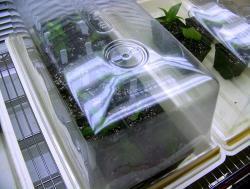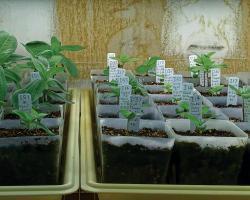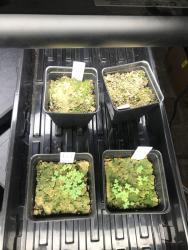Hi COamateur,
Welcome to the National Gardening Association and to this Seeds Forum. Are you in Colorado? If so, we are in neighboring states.
I use PermaNest trays, which are basically the same size as 1020 trays, but much more substantial. I get 18 3.25-inch pots per tray, and I pour about a quarter inch of water in the tray and let the pots soak that up by capillary action. I keep transparent covers over the trays to hold the moisture in, because the relative humidity indoors during our cold weather is
very low. While the seedlings are germinating, they are on a heating mat.
When the seedlings get a little size on them, they come out from under the humidity domes. I add more water to the Permanest trays every few days, and I add some soluble nutrients to that water.


I use Reverse Osmosis water, which is essentially as pure as distilled water, (and purer than rain water), because we are in a rural area and the well here provides water of questionable content.
ZM






